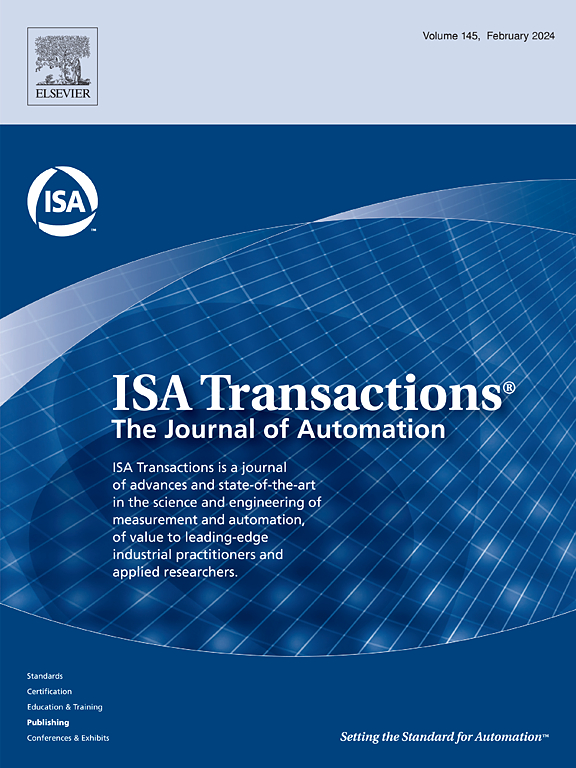基于递归观测器的不确定Lipschitz非线性系统切换动态事件触发抗扰控制。
IF 6.5
2区 计算机科学
Q1 AUTOMATION & CONTROL SYSTEMS
引用次数: 0
摘要
研究了一类具有时变扰动的不确定Lipschitz非线性系统的事件触发抗扰控制问题。解决这个问题的设计过程包括构造状态和扰动联合观测器,以及设计包含可设计的最小事件间时间的事件触发控制器。为了设计联合观测器,首先利用系统状态和扰动导数的线性组合将时变扰动转化为多个中间变量。随后,构造递归观测器获得中间变量估计,并利用递归机制补偿扰动变换产生的额外导数项。然后,利用状态估计和干扰估计来开发事件触发的抗扰控制器。事件触发协议包括强制休息间隔和动态触发变量,该变量在休息间隔期间单调增加,确保保证的最小事件间时间,同时还降低触发频率。最后,通过数值算例验证了该方法的有效性。仿真结果表明,与现有方法相比,该方法能将稳态误差降低59.6%,将最小触发间隔延长至少2.44倍。本文章由计算机程序翻译,如有差异,请以英文原文为准。
Switching dynamic event-triggered disturbance rejection control for uncertain Lipschitz nonlinear system using recursive observers
This paper investigates the event-triggered disturbance rejection control problem for a class of uncertain Lipschitz nonlinear systems with time-varying disturbances. The design process to address this problem involves the construction of a state and disturbance joint observer, along with the design of an event-triggered controller that incorporates a designable minimum inter-event time. To design the joint observer, time-varying disturbances are initially transformed into multiple intermediate variables by employing a linear combination of system states and disturbance derivatives. Subsequently, the recursive observers are constructed to obtain intermediate variable estimations, while the recursive mechanism is utilized to compensate for the extra derivative term arising from disturbance transformation. Then, states and disturbance estimations are used to develop the event-triggered disturbance rejection controller. The event-triggered protocol includes a mandatory resting interval and a dynamic trigger variable that monotonically increases during the resting interval, ensuring a guaranteed minimum inter-event time while also decreasing the trigger frequency. Finally, we provide numerical examples to showcase the effectiveness of the proposed method. Simulation results show that the proposed method is able to reduce the steady-state error by 59.6% and extend the minimum trigger interval by at least 2.44 times compared to existing methods.
求助全文
通过发布文献求助,成功后即可免费获取论文全文。
去求助
来源期刊

ISA transactions
工程技术-工程:综合
CiteScore
11.70
自引率
12.30%
发文量
824
审稿时长
4.4 months
期刊介绍:
ISA Transactions serves as a platform for showcasing advancements in measurement and automation, catering to both industrial practitioners and applied researchers. It covers a wide array of topics within measurement, including sensors, signal processing, data analysis, and fault detection, supported by techniques such as artificial intelligence and communication systems. Automation topics encompass control strategies, modelling, system reliability, and maintenance, alongside optimization and human-machine interaction. The journal targets research and development professionals in control systems, process instrumentation, and automation from academia and industry.
 求助内容:
求助内容: 应助结果提醒方式:
应助结果提醒方式:


